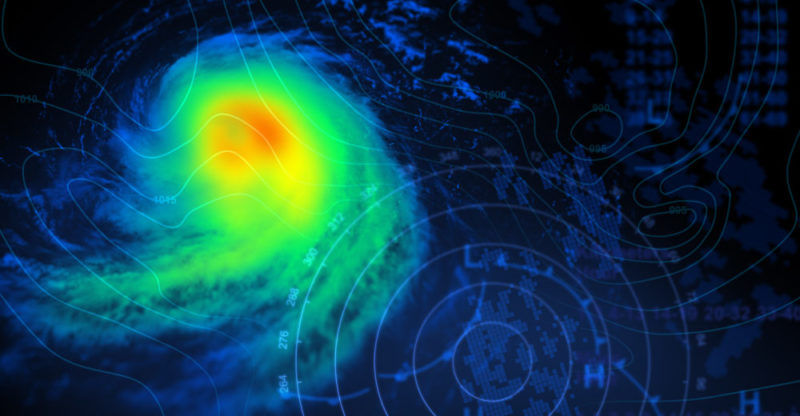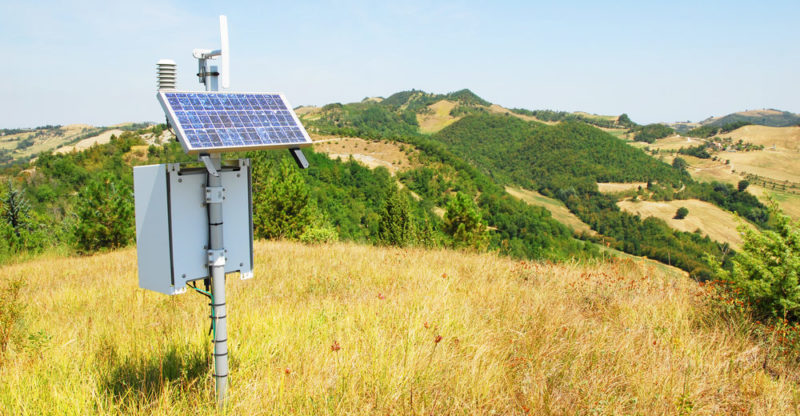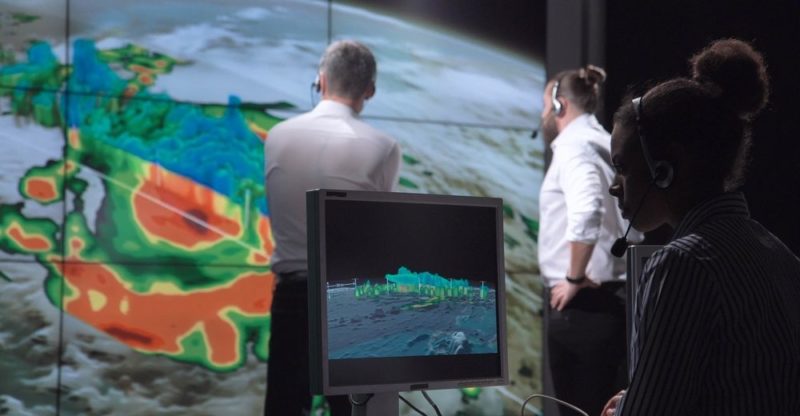We explain what meteorology is, what this science studies, and the branches that make it up. In addition, its characteristics and objectives.
What is meteorology?
Meteorology is the science that studies short-term phenomena that take place in the lower layers of the atmosphere . To do this, it uses parameters such as temperature , humidity, atmospheric pressure, the intensity and direction of the wind or rainfall.
Meteorology is usually present in the media ( television , newspapers , radio ). It offers short-term weather forecasts , to warn us about rainy days, waves of heat or cold, and eventual storms or other meteorological phenomena that require forecasting.
Those who perform this trade are called meteorologists.
History of meteorology

The observation of the weather and the atmosphere is an activity performed by the human being , in its way, since antiquity .
Ancient cultures associated the passage of time and its cultural cycles with the climatic seasons.
In addition, they could foresee the periodic floods of their rivers , or the advance and retreat of the ice and seas .
The first treaty in this regard comes from Ancient Greece , from 340 BC. C .: Meteorological of the philosopher Aristotle . A student of his named Theophrastus later wrote a similar work that he called the Book of Signs , focused on observing phenomena rather than predicting the weather .
Meteorology grew along with the human sciences until in 1735 the scientist George Hadley was able to correctly describe the atmospheric circulation. Thus he laid the foundations to understand the complex system of relationships between air , sun , land and water that determines the climate.
In the nineteenth century many scientists dedicated themselves to understanding the atmospheric mechanism from different perspectives. These include Gaspard-Gustave Coriolis, William Ferrel and others.
The incorporation of electronics and computers into meteorological sciences allowed the formulation of complex climate models and the processing of enormous volumes of information. The artificial satellites and extra - planetary observation completed the picture of contemporary meteorology.
What does meteorology study?
Meteorology studies the phenomena produced in the lower atmosphere . To do this, it takes into consideration the physical, chemical and thermodynamic conditions that produce them and the natural laws that govern them.
In this sense, its object of study is everything concerning the climatology and the forecast of the climate . But it also deals with the effects of solar radiation on the Earth's atmosphere and the behavior of the water ( liquid , solid or gaseous ) that is present in it.
Branches of meteorology

The main branches of meteorology are:
- Synoptic meteorology. That which is dedicated to the prediction of the future climate, through continuous and real-time observation of the atmosphere, taking annotations on geographical maps and studying the best way to represent the information for general consumption.
- Macrometeorology. It differs from the synoptic in that its approach is much more comprehensive, aspiring to contemplate the climate on the entire planet , understood as a system of movements and repercussions at a global level.
- Mesometeorology. Study of meteorological conditions on a medium scale, that is, in the intermediate layer of the atmosphere (between a few kilometers and 2000 km high).
- Hydrometeorology. A meteorological approach focused on the dynamics of water (gas, liquid or solid) in the atmosphere: rain , snowfall, atmospheric vapor, etc.
Meteorological equipment and instruments
 Meteorology has very little laboratory equipment of its own, but it does have large amounts of field equipment, arranged in two sets:
Meteorology has very little laboratory equipment of its own, but it does have large amounts of field equipment, arranged in two sets:
- Weather stations. These are sites designed to constantly record (usually every 3 hours and in real time) the atmospheric conditions of a specific region. For this it is equipped with various measuring implements, such as:
- Anemometer. To measure the wind speed.
- Vane. To indicate the direction of the wind based on the cardinal points.
- Barometer. To measure atmospheric pressure.
- Heliograph. To record the amount of solar energy that hits the earth's surface.
- Hygrometer. To measure ambient humidity.
- Pluviometer. To measure the amount of rain that has fallen.
- Thermometer. To measure the ambient temperature.
- The meteorological satellites . The artificial satellites in orbit around the planet offer, as a whole, a global vision of the Earth's meteorological system. In addition to monitoring the climate, they record other indices and phenomena, such as pollution , ocean currents, auroras, etc.
Objectives of meteorology
Meteorology has the objective of understanding and predicting the behavior of the lower Earth's atmosphere in a given period of time (usually 24-48 hours). His projections regarding the climate in the coming week, have a high margin of precision and a scientifically verifiable argumentation .
How do you study meteorology?

The study of meteorology, also known as Atmospheric Sciences or Atmospheric Sciences, is usually an undergraduate degree. Despite its enormous economic relevance for any country, it does not usually have enough students and graduates .
Unfortunately it is only associated with the television forecast of the weather. On the contrary, it is actually a world reference discipline , which takes 5 years to complete and which has a varied field of work in both public and private industry.
Why is meteorology important?
This science allows the populations to be alerted in time to extreme weather events , such as hurricanes , storms or tornadoes , thus saving lives. Its importance is even greater in this time of climate change, when the seasons can become erratic or unpredictable.
On the other hand, its association with the environmental study and with other human economic activities, is of great help for economic planning . It can be applied in the agricultural area but also in other industries such as transportation, thus avoiding disasters in time.
Differences with climatology

Meteorology focuses on predicting the climate in the times immediately to come , studying the forces and phenomena of the atmosphere. Instead, climatology assumes a much longer-term role.
The latter's job is to study past, present and future climate models . In this way, it allows us to understand the evolution of the climate in the world and to be able to anticipate long-term effects, using statistical rather than predictive values.
Weather forecast
The weather forecast is built from the centralized reception of all the data from the different weather stations. In addition, satellite information (if any) of a nation is included.
These observations are repeated every 3 hours , generally, to have the highest possible index of certainty. This is because the climate system is changeable and in many cases, very precisely unpredictable.
The weather forecasts are then analyzed to determine their percentage of certainty and disseminated among the population , so that it is informed.
Meteorological phenomena

The most common meteorological phenomena are:
- Rain. As we all know, it is the fall of water droplets from charged clouds in the atmosphere. It can occur in various intensities, from a brief drizzle to a torrential downpour.
- Wind. Changes in atmospheric pressure due to temperature generate movements of the air masses, which we feel like wind. They can also vary in intensity, especially in cases of hurricanes or tornadoes, which is when they become most intense.
- Fog. The abundance of clouds, but at the level of the earth's surface, impedes visibility and lowers the temperature.
- Snow. Precipitation, under certain conditions, can begin to freeze without doing so completely, resulting in a fall of semi-frozen flakes that we know as snow, which once on the ground slowly melt.
- Hail. Similar to snow, but it is well-frozen water, which falls to the surface like ice stones of different sizes, which can damage property and injure people.
Luke is passionate about fostering student involvement and connection. He studied psychology for his major and likes learning about the past. Luke aims to specialize in artificial intelligence and cybersecurity. .
Leave a reply
Your email address will not be published. Required fields are marked *Recent post

Sport: What Is It, Types, Risks, Features, Characteristics and Examples

Dogs: Emergence, Features, Characteristics, Feeding and Breeds

Story: Definition, Elements, Structure, Features and Characteristics

